Living the American dream - Exclusive Q&A with Gene Haas
Marussia joined F1 racing at the start of 2010 on the back of considerable success in junior single-seater series. Four years on and they have only just scored their first world championship points. Fellow ‘newcomers’ Caterham are still waiting.
So how does American entrepreneur and NASCAR team owner Gene Haas plan to make an impact with his new US-based squad? We talk to Haas about Danica, Dallara, and his planned 2016 debut…
Q: Gene, you are a major player in the all-American NASCAR series and suddenly you have decided to come into Formula One racing, a form of motorsport still somewhat alien to many US race fans. Why is that?
Gene Haas: Ha, I don’t think that it is that alien. Formula One has been working in the American mind-set for decades. I would even go so far as saying that Americans like Formula One racing. I remember back to 1975 and the Long Beach Grand Prix - that was quite something. I’ve been a fan since then - and I was pretty young back then.
Q: You are a successful race team entrepreneur and now you will be effectively starting from the bottom again. What’s the appeal in that? And where do you see the upside for you?
GH: Well, we’ve used NASCAR to help sell our Haas Automation products in America - we sell CNC machine tools - and racing in NASCAR has been very good at that. So the idea was to join Formula One and take our brand and raise awareness of it - by taking it to the premier brand of motorsport. Formula One is a premium brand in the rest of the world and associating ourselves with that will help sell our products throughout the world.
Q: What about Gene Haas the person? Is petrol in your DNA?
GH: To be honest, I like to build new companies. I have a machine tool company that is very successful, we have a wind tunnel, and Stewart Haas Racing is a very successful business venture - and I am convinced that the F1 business will be a successful business venture, too.
Q: So are you more an entrepreneur than a racer?
GH: Good question. When looking back I was involved in racing before I became an entrepreneur. But I was never a driver - I worked in shops that produced parts for race cars. So I know about racing teams - and the needs they have. Right now I would not be surprised if many of the parts that are produced for Formula One cars are done on our machines. We sell a lot of machine tools in England.
Q: It’s no secret that Formula One racing is expensive. What is your business plan? And is it bad news for you that no F1 budget cap has materialised?
GH: Our experience in NASCAR has taught us to efficiently deploy assets and we will do the same thing in Formula One. Our plan is not to spend hundreds of millions to be successful. I think we can show people that you don’t have to go on such a spending spree to be successful. No spending to the moon! (laughs)
Q: In the F1 paddock there are teams with 600-plus people on the payroll and others with 200 employees. Where will your team settle?
GH: I think when you have 600-plus people nobody really knows what everybody is doing. I think in racing you need a small group of core people who know what they are doing - in that way you get a lot more accomplished than with a huge organisation. That’s how we raced in the US and that’s our goal in F1. Our plan is not to make every single part for F1 ourselves - we want to buy as much technology as we can from a partner and we only make what we have to. We will be a fairly lean organisation. And my experience is that racing loves lean organisation. You’ve got to be quick and fast - you’ve got to be lean!
Q: But right now it’s still the big teams that make up the frontrunners, perhaps with the exception of Force India. What does that tell you? Are you prepared to start at the back again?
GH: We have to learn. It will take time, because of course you don’t come in here and beat those guys straightaway. My guess is that you have to spend three, four or five years at the back - learning the ropes - and that will be our job: to learn to make this thing work. I cannot promise that we can do it, but at the same time the way we do things might change the way other people do them. I think we can do it economically and be successful in doing it. I wouldn’t do it if I thought I might fail.
Q: Your plans to base your team in the US have raised a lot of eyebrows, especially after Kenny Anderson and Peter Windsor’s ill-fated project of a few years back. Can you make that work?
GH: I think in this age of communication so much can be done on the Internet. Our base will always be Kannapolis, North Carolina. We plan to run a small shop in Europe where the cars come in and are refurbished and worked on, but the main facilities for building and design will be Kannapolis.
Q: F1 racing is probably more about talent than location. Where do you get the talent that you need? It’s already difficult to lure talent outside of the UK, unless you’re Ferrari…
GH: America has tremendous resources. Americans are very creative - some of the best - so we are not planning to just take European resources. This will be an American team, and it will have American people at the top, but of course we will also take on people from other countries with F1 experience.
Q: You said that you want to ‘buy’ as many components for your car as possible. What components do you already have in your shopping bag?
GH: The biggest part is the power train, and that’s the majority of the back of the car, so if we can wrap up a deal with Ferrari - in fact right now there are only three engine manufacturers - that would almost mean half the car! So we will have to be responsible to build the front half of it.
Q: You have decided to postpone your debut from 2015 to 2016. Why is that?
GH: Actually we never postponed it. We’ve been given the option to join in 2015 or 2016. The whole process of getting the licence and all that, everything was taking a bit longer. And then there were the simple administrative things with accounting that you need when having people work in many different countries. And then we suddenly noticed, wow, in six months we have to have a car done, so we decided to go for 2016. Racing in 2015 would have meant throwing everything on it, so 2016 made more sense.
Q: Are there already sponsors interested in joining?
GH: The sponsor matter is a bit like chicken and egg - what comes first? We are of course talking to sponsors, but sponsors aren’t going to come until they see a car. Saying that our intention is to go racing will not do - nobody will sign on that prospect. And my intention is to prove that we can do it - and then we will go and ask partners for money. I don’t feel comfortable promising that we will deliver whatever - I want to show first that we can. We can do F1 with or without sponsors.
Q: If Anderson and Windsor’s bid to launch a US-based team failed, why do you think you can do better?
GH: I think they tried to do too much in too short a time - and suddenly they found out that they were running out of time. For us now that would be the worst thing in the world. We are going to be more cautious. We clearly say here is what we can do and here is the time frame that we’ve got. We’re going to be more organised in what we do - to get the results that we want.
Q: When did the idea first strike you that going F1 racing could be an option for you?
GH: Actually Kenny Anderson spoke to me about an F1 team five or six years ago and he kind of introduced me a little bit to it. As I said before, I knew about Formula One racing back in the seventies - when I was a mechanic at a Formula 5000 team the year before Formula One went to Long Beach - but Kenny introduced me more to it. But back then, when I decided to go racing with a team, NASCAR was the venue as it was entrenched in the United States - it was the leading racing sport - and we’ve built a heck of a following in NASCAR with my machine tools. Then the opportunity came along with USF1, which wasn’t successful, but then we started to talk to Gunther Steiner (former Red Bull and Jaguar Racing technical director) and he said, ‘Hey, would you be interested?’ There was always that low level interest from my side and suddenly it came to a point that the question came: ‘Do you want to do it?’ And the answer was yes! The beauty of a project for me is putting a business together - and combining it with my machine tools, which is really important for me. And no doubt, machine tools and racing really fit well. It’s a good marketing thing. It’s about brand association - I think our brand can really take off.
Q: Of course one inevitable question that arises when somebody sets out to build an F1 team is drivers. Who do you have in mind? Who would be your dream driver?
GH: Danica Patrick in one of our cars would be the dream driver…
Q: But when you hopefully hit the grid in 2016 she will be 34 - about the time many F1 drivers retire…
GH: The question was about the dream driver! But she surely fits the bill. She is a woman in a man’s sport - that would attract a lot of attention. She weighs about 50 kilos - which these day sounds fantastic - so indeed she’s got a lot of attributes that would be good to have.
Q: So you definitely could look for a woman for one of your seats?
GH: Definitely. But realistically the first driver is going to be a current F1 driver who knows the ins and outs of the sport, to help us sort out what we have to do and who can give a lot of feedback. In that mould would be driver number one. Driver number two would be American.
Q: What is your timeline from now until the 2016 season?
GH: We work backwards: we know that the car has to be ready in December 2015. I can imagine the car actually being built sometime in July next year.
Q: Will Dallara build your chassis - or hasn’t that been decided yet?
GH: Dallara will probably be a subcontractor. Nothing has been decided yet so I don’t want to read anywhere that Dallara would be anything other than maybe a supplier of parts.
Q: When you take a quiet moment and contemplate what’s coming your way in the next few months, do you still think it was a good idea to set your sights on F1 racing?
GH: Yes, because I think it’s a great opportunity. We will meet all kinds of nice people, it’s a racing environment, it’s competitive, and it helps build business.
Q: The paddock is sometimes referred to as a ‘shark pond’ - are you prepared to jump into that?
GH: Ha, I have not seen any sharks (laughs). They are racers. And with the right feeding and habitat you will do fine.
Next Up
Related Articles
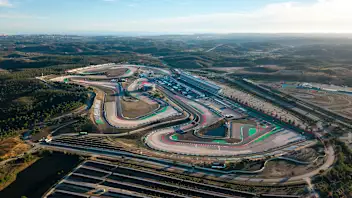 Formula 1 to return to Portugal in 2027 and 2028
Formula 1 to return to Portugal in 2027 and 2028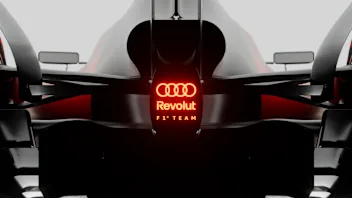 Audi announce team name and global launch date for 2026 challenger
Audi announce team name and global launch date for 2026 challenger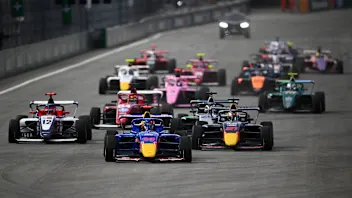 F1 ACADEMY unveils calendar for 2026 season
F1 ACADEMY unveils calendar for 2026 season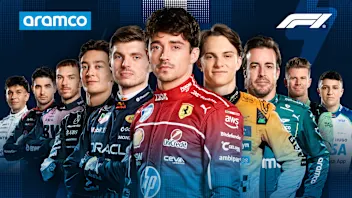 Power RankingsWho did our judges rank as the best F1 driver of 2025?
Power RankingsWho did our judges rank as the best F1 driver of 2025?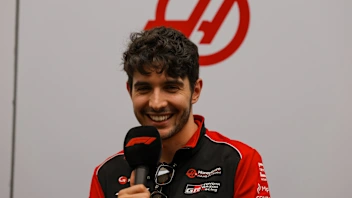 Getting to know the real Esteban Ocon
Getting to know the real Esteban Ocon Norris collects World Championship trophy at FIA Awards
Norris collects World Championship trophy at FIA Awards